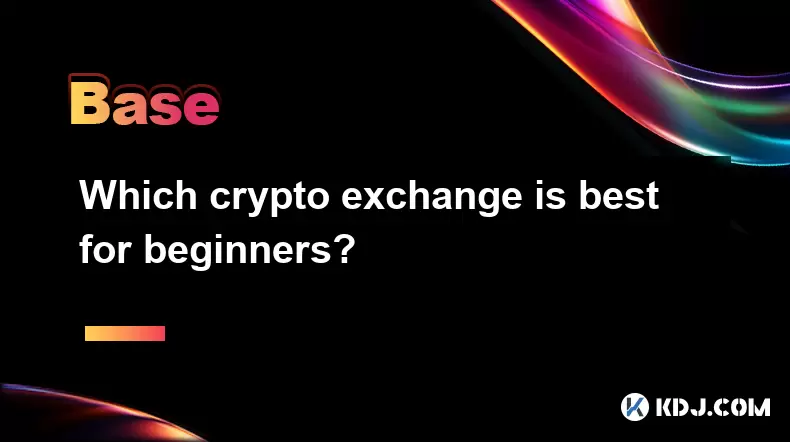-
 Bitcoin
Bitcoin $118400
0.39% -
 Ethereum
Ethereum $3814
2.17% -
 XRP
XRP $3.547
1.34% -
 Tether USDt
Tether USDt $1.000
0.00% -
 BNB
BNB $769.5
2.95% -
 Solana
Solana $191.7
6.36% -
 USDC
USDC $0.9999
0.01% -
 Dogecoin
Dogecoin $0.2722
7.75% -
 Cardano
Cardano $0.8995
5.59% -
 TRON
TRON $0.3158
-0.78% -
 Hyperliquid
Hyperliquid $47.37
4.46% -
 Stellar
Stellar $0.4848
3.54% -
 Sui
Sui $4.031
1.72% -
 Chainlink
Chainlink $20.11
3.94% -
 Hedera
Hedera $0.2832
3.16% -
 Avalanche
Avalanche $26.20
4.27% -
 Bitcoin Cash
Bitcoin Cash $530.5
0.67% -
 Shiba Inu
Shiba Inu $0.00001568
3.59% -
 Litecoin
Litecoin $118.4
1.42% -
 UNUS SED LEO
UNUS SED LEO $8.976
-0.23% -
 Toncoin
Toncoin $3.349
2.54% -
 Polkadot
Polkadot $4.590
2.54% -
 Uniswap
Uniswap $10.56
-0.59% -
 Ethena USDe
Ethena USDe $1.001
0.00% -
 Monero
Monero $327.7
0.39% -
 Pepe
Pepe $0.00001422
2.62% -
 Bitget Token
Bitget Token $4.973
-1.22% -
 Dai
Dai $1.000
0.02% -
 Aave
Aave $331.9
1.59% -
 Bittensor
Bittensor $429.6
-0.56%
Which crypto exchange is best for beginners?
A beginner-friendly crypto exchange should offer a simple interface, educational resources, strong security, and clear fees to help new users navigate trading with confidence.
Jul 22, 2025 at 01:49 am

Understanding the Needs of a Beginner in Crypto Trading
For a newcomer to the world of cryptocurrency, the initial experience can be overwhelming. Choosing the right crypto exchange is one of the most crucial steps in this journey. A beginner must look for an exchange that offers a user-friendly interface, educational resources, and clear transaction processes. Unlike advanced traders who may prioritize features like margin trading or API access, new users typically need simple navigation, clear fee structures, and reliable customer support.
The security of funds is another major concern. Beginners may not be familiar with the risks involved in storing digital assets, so the exchange should provide secure wallet options, two-factor authentication (2FA), and cold storage solutions. Additionally, regulatory compliance is a key factor, as it ensures the platform adheres to legal standards and protects user data.
Key Features to Look for in a Beginner-Friendly Exchange
When evaluating which crypto exchange is best for beginners, several core features stand out. First and foremost is ease of use. The platform should allow users to buy, sell, and store cryptocurrencies with minimal effort. Coinbase and Binance are often cited for their intuitive dashboards and streamlined processes.
- Coinbase offers a simple onboarding process, including step-by-step guides for buying crypto using fiat currency.
- Binance provides a beginner mode that hides complex trading tools and focuses on basic transactions.
- Kraken is known for its clean design and educational materials that help new users understand market dynamics.
Another important feature is availability of customer support. Beginners may face issues with verification, deposits, or withdrawals. A responsive support team via live chat or email is essential. Also, multi-language support can be a deciding factor for non-English speakers.
Supported Cryptocurrencies and Fiat Options
A beginner-friendly exchange should support a variety of major cryptocurrencies such as Bitcoin (BTC), Ethereum (ETH), Litecoin (LTC), and Cardano (ADA). Offering stablecoins like Tether (USDT) or USD Coin (USDC) can also help users manage volatility.
Equally important is the availability of fiat on-ramps. The exchange should allow users to deposit USD, EUR, or GBP easily. Methods like bank transfers, credit/debit card payments, and PayPal integration are preferred. For example:
- Coinbase allows users to link bank accounts and purchase crypto instantly with a card.
- Binance supports various fiat currencies and offers a P2P trading section for local transactions.
- Kraken provides direct bank transfers and wire transfers for larger deposits.
Some platforms also offer buy/sell buttons that let users execute trades without navigating complex order books, which is ideal for beginners.
Fee Structures and Transparency
Fees can significantly impact returns, especially for small trades. Beginners might not be aware of the different types of fees, such as trading fees, deposit/withdrawal charges, and network fees. A beginner-friendly exchange should clearly outline all costs on its website.
- Coinbase uses a flat fee model for small trades, which makes it easier to calculate costs.
- Binance employs a tiered fee structure based on trading volume, which can be more cost-effective for frequent traders.
- Kraken offers transparent fee tiers, which are published on their website and updated regularly.
It’s also important to note any hidden fees associated with withdrawals or account inactivity. Platforms like Binance offer fee discounts for users who hold their native token (BNB), which can be beneficial over time.
Security Measures and Regulatory Compliance
Security is non-negotiable when it comes to choosing a crypto exchange. Beginners may not be familiar with best practices for securing digital assets, making them more vulnerable to scams or theft. A reliable exchange should implement:
- Two-factor authentication (2FA) to protect account access.
- Cold storage for the majority of user funds.
- Regular security audits by third-party firms.
Regulatory compliance is another key aspect. Exchanges that operate under the oversight of financial authorities are more likely to follow strict guidelines regarding user identity verification (KYC) and anti-money laundering (AML) procedures. For example:
- Coinbase is registered with the U.S. Securities and Exchange Commission (SEC) and complies with U.S. regulations.
- Kraken is a licensed financial institution in the U.S. and holds a New York BitLicense.
- Binance has faced regulatory scrutiny in several jurisdictions but has taken steps to improve compliance through its Binance.US platform.
Setting Up Your First Account and Making a Purchase
To get started, a beginner should follow these steps to set up an account and make their first cryptocurrency purchase:
- Choose a reputable exchange and visit its official website.
- Create an account by providing an email address and setting a strong password.
- Complete identity verification (KYC) by uploading a government-issued ID.
- Enable two-factor authentication (2FA) using an app like Google Authenticator.
- Deposit funds using a supported method such as bank transfer or card.
- Select the cryptocurrency you wish to buy and enter the amount.
- Review the transaction details, including fees, and confirm the purchase.
After completing these steps, the purchased cryptocurrency will appear in the user’s wallet on the exchange. It’s advisable to withdraw funds to a personal wallet for added security, especially for long-term holdings.
Frequently Asked Questions
Q: Can I use a crypto exchange without verifying my identity?
A: Most regulated exchanges require identity verification (KYC) to comply with anti-money laundering laws. However, some platforms allow limited transactions without verification.
Q: Are there any crypto exchanges specifically designed for children or teenagers?
A: No, most exchanges require users to be at least 18 years old. Parents or guardians can explore educational platforms or custodial crypto wallets for minors.
Q: How do I know if an exchange is trustworthy?
A: Check for regulatory licenses, read user reviews, verify security features like 2FA and cold storage, and ensure the platform has a transparent fee structure.
Q: What should I do if I forget my exchange account password?
A: Use the platform’s password recovery option, which typically involves email verification or answering security questions. Always store recovery phrases securely.
Disclaimer:info@kdj.com
The information provided is not trading advice. kdj.com does not assume any responsibility for any investments made based on the information provided in this article. Cryptocurrencies are highly volatile and it is highly recommended that you invest with caution after thorough research!
If you believe that the content used on this website infringes your copyright, please contact us immediately (info@kdj.com) and we will delete it promptly.
- Bitcoin, Trump Media, and Acquisition: A New York Perspective
- 2025-07-22 06:30:12
- Venture Capital, Crypto Treasuries, and Ethena (ENA): A New York Perspective
- 2025-07-22 06:50:13
- Solana: Building a Decentralized Nasdaq with Block Assembly Marketplace?
- 2025-07-22 06:30:12
- Jito, BAM, and Solana MEV: A New Era for Blockspace?
- 2025-07-22 06:50:13
- Trump Media, Bitcoin, and Congress: A New Era of Crypto Politics?
- 2025-07-22 04:30:12
- Whales, Momentum, and SHIB: What's the Deal?
- 2025-07-22 05:10:13
Related knowledge

What is the difference between CeFi and DeFi?
Jul 22,2025 at 12:28am
Understanding CeFi and DeFiIn the world of cryptocurrency, CeFi (Centralized Finance) and DeFi (Decentralized Finance) represent two distinct financia...

What is the difference between a sidechain and a Layer 2?
Jul 20,2025 at 11:35pm
Understanding the Concept of SidechainsA sidechain is a separate blockchain that runs parallel to the main blockchain, typically the mainnet of a cryp...

What is the Inter-Blockchain Communication Protocol (IBC)?
Jul 19,2025 at 10:43am
Understanding the Inter-Blockchain Communication Protocol (IBC)The Inter-Blockchain Communication Protocol (IBC) is a cross-chain communication protoc...

How does sharding improve scalability?
Jul 20,2025 at 01:21am
Understanding Sharding in BlockchainSharding is a database partitioning technique that is increasingly being adopted in blockchain technology to enhan...

What is the "crypto trilemma" of scalability, security, and decentralization?
Jul 19,2025 at 06:28pm
Understanding the Concept of the Crypto TrilemmaThe crypto trilemma refers to the challenge of simultaneously achieving scalability, security, and dec...

What is a cliff and vesting schedule in tokenomics?
Jul 20,2025 at 10:28am
What Does a Cliff Mean in Tokenomics?In tokenomics, a cliff refers to a specific period during which token holders are not allowed to access or transf...

What is the difference between CeFi and DeFi?
Jul 22,2025 at 12:28am
Understanding CeFi and DeFiIn the world of cryptocurrency, CeFi (Centralized Finance) and DeFi (Decentralized Finance) represent two distinct financia...

What is the difference between a sidechain and a Layer 2?
Jul 20,2025 at 11:35pm
Understanding the Concept of SidechainsA sidechain is a separate blockchain that runs parallel to the main blockchain, typically the mainnet of a cryp...

What is the Inter-Blockchain Communication Protocol (IBC)?
Jul 19,2025 at 10:43am
Understanding the Inter-Blockchain Communication Protocol (IBC)The Inter-Blockchain Communication Protocol (IBC) is a cross-chain communication protoc...

How does sharding improve scalability?
Jul 20,2025 at 01:21am
Understanding Sharding in BlockchainSharding is a database partitioning technique that is increasingly being adopted in blockchain technology to enhan...

What is the "crypto trilemma" of scalability, security, and decentralization?
Jul 19,2025 at 06:28pm
Understanding the Concept of the Crypto TrilemmaThe crypto trilemma refers to the challenge of simultaneously achieving scalability, security, and dec...

What is a cliff and vesting schedule in tokenomics?
Jul 20,2025 at 10:28am
What Does a Cliff Mean in Tokenomics?In tokenomics, a cliff refers to a specific period during which token holders are not allowed to access or transf...
See all articles

























































































